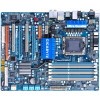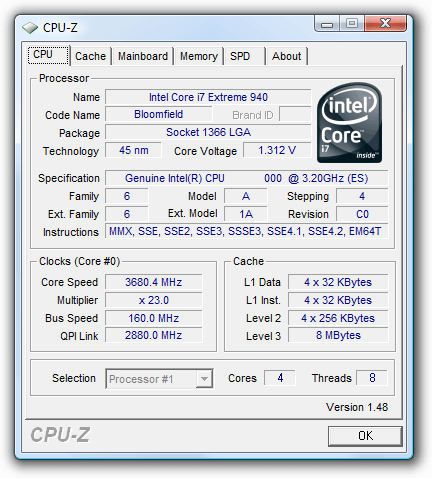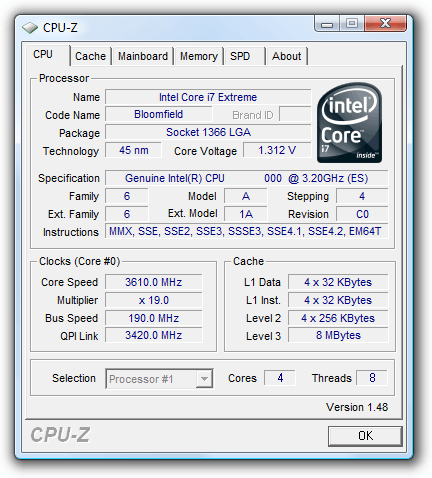- Qualcomm Launches Snapdragon 4 Gen 2 Mobile Platform
- AMD Launches Ryzen PRO 7000 Series Mobile & Desktop Platform
- Intel Launches Sleek Single-Slot Arc Pro A60 Workstation Graphics Card
- NVIDIA Announces Latest Ada Lovelace Additions: GeForce RTX 4060 Ti & RTX 4060
- Maxon Redshift With AMD Radeon GPU Rendering Support Now Available
Gigabyte EX58-UD4P

At CES earlier this year, Gigabyte showed off two new motherboards that promised both a great value and of course, good overclocking abilities. The EX58-UD4P was one of those, and we’ve now been able to put it to the test. We’re happy to report that as we had hoped, the board delivers on all fronts, and coupled with a reasonable price, it looks to be well-worth a look.
Page 8 – Overclocking the EX58-UD4P
Before tackling our overclocking results, let’s first clear up what we consider to be a real overclock and how we go about achieving it. If you regularly read our processor reviews, you may already be aware that I personally don’t care for an unstable overclock. It might look good on paper, but if it’s not stable, then it won’t be used. Very few people purchase a new piece of equipment for the sole purpose of finding the maximum overclock, which is why we focus on finding what’s stable and usable.
To help find the maximum stable overclock on any given motherboard, we focus on sticking to the simpler voltages, such as the ones for the Northbridge and CPU, and also the DIMM if it’s required. We try to work within safe limits, because anything too high is going to only kill your hardware faster. Luckily, all computer components nowadays are designed to handle some abuse, so you never need a lot of voltage to get anywhere.
With Core i7, more factors can come into play with overclocking, but we focus on increasing the Base Clock first and foremost, just like we focus on the Front-Side Bus on Core 2 motherboards. Our goal is to keep voltages are low as possible while reaching the highest stable overclock. Areas where we will increase voltage if needed is the CPU, Northbridge and QPI.
Overclocking Gigabyte’s EX58-UD4P
Being that the BIOS and the board isn’t too far different than the UD5, I had a feeling I knew what to expect, and overall… I wasn’t too far off the mark. Luckily, the UD4P overclocks like most of the other X58 boards we’ve had in, and that’s a good thing. Whether you have an i7-920 or i7-965 Extreme Edition, you’re going to be seeing some sweet clocks.
Without raising the voltages even an inch, we were able to push the board to an impressive 160MHz Base Clock while retaining full stability. This is rather impressive, as that would allow a 3.2GHz clock on the i7-920… with no voltage increase! Of course, we can’t say that 3.2GHz would be stable on all i7-920 chips, but from what we’ve seen from retail offerings, we have no reason to believe that the vast majority couldn’t.

What if we take to increasing voltages? Maybe not so surprisingly, we hit 190MHz… the exact same overclock we hit on the UD5. This didn’t seem too surprising, and while we’ve hit more than 200MHz on some other boards, 190MHz is hardly lacking. Even on an i7-920, that would allow for a 3.8GHz clock speed, should the chip allow it.

Gigabyte aims for great overclocking on their boards, and the UD4P delivers. To date, the only board we’ve had go beyond 200MHz has been the ASUS Rampage II Extreme. That board retails for $400, however, so there’s an obvious premium for ultimate overclocking-ability.
Support our efforts! With ad revenue at an all-time low for written websites, we're relying more than ever on reader support to help us continue putting so much effort into this type of content. You can support us by becoming a Patron, or by using our Amazon shopping affiliate links listed through our articles. Thanks for your support!





